Looking to buy a Kia Sorento? Kia has been on a roll lately when it comes to their reliability rating. But just like any other car, there are some bad model years that have worse reliability than others. So, what are the Kia Sorento years to avoid?
This post will discuss all the Kia Sorento years to avoid, reliability ratings, common problems, and more. Whether you want to buy new or secondhand, by the end of this post, you’ll know which Kia Sorento years to avoid and you can find the perfect Sorento for you. Use this table of contents to help you navigate through:
Kia Sorento Overview
First, a little background about the Sorento. It’s Kia’s mid-size crossover SUV with seven seats as standard, perfect for a huge family. It was unveiled in 2003, although they only started selling it in the US in 2006.
Kia then introduced its second generation in 2009, this was probably the generation you’re more familiar with. Available with either a 2.4L engine or a 3.3L V6, and front-wheel drive or all-wheel drive. You can pick one up these days for around $8,000 and they’ll usually have around 120,000 miles on the clock.
Kia then introduced the third generation in 2015. Like the previous generation, it was available with either five or seven seats. But the third generation was bigger, giving rear passengers more space than before. Engine options were still the same, and the grunty V6 is the one you want. You’ll find them for around $14,000 in the market.
The current fourth generation (2021) is the one we like the most though. Previous generations were lacking in terms of interior quality and features. And safety scores were below average, although the 2017 model year did win “Top Safety Pick” from the IIHS.
Kia offers the Sorento in eight different trims, two engine options, and two drive configurations (FWD and AWD). The sweet spot is the EX trim. Starting at around $35,000, it comes with a turbocharged 2.5L four-cylinder making a very healthy 281 horsepower.
This trim also gets you a power liftgate, wireless phone charger, heated and 10-way power seats for the driver, and Highway Driving Assist among other features. It’s mostly about the engine upgrade for this trim, as even the second-cheapest Sorento (the ‘S’ trim) has plenty of features as standard. Oh, an AWD version is also available for the EX trim if you need that.
Kia Sorento Reliability
Regardless of what type of car you buy, reliability is important. Even more so with a crossover SUV, since it’s likely going to be your daily driver. So, is the Sorento a reliable car?
In a nutshell, it’s about average. RepairPal gives the current Sorento a reliability rating of 4 out of 5 stars, which is average in the industry. Meanwhile, J.D. Power gives a score of 77 out of 100, which is also considered average.
Meanwhile, previous generations have a mixed score between average and slightly below average. The good news is that there aren’t any horror stories, especially for the new generation. But there are years that you should avoid:
Kia Sorento Years To Avoid
So, what Kia Sorento years should you avoid then? When looking at the number of complaints, you should avoid these at all costs:
- 2006. Not that many complaints, but there are notable complaints about the engine.
- 2011. Has the most complaints, avoid at all costs. Most complaints were about the door lock actuator, but there are also hundreds of complaints about the engine failing.
- 2012 – 2016. The engine problems persist up until the 2016 model year. Many owners report catastrophic engine failure, more in the next section.
Overall, the Sorento has decent reliability and not too many bad model years. You can safely buy the 2017 model onwards without many issues, and the 2007 to 2010 models are also great. Avoid the 2011 to 2016 models at all costs if you don’t want to deal with costly engine replacements.
Kia Sorento Problems
Here’s something interesting about the Kia Sorento: most of the common problems we’re about to list are for the problematic 2011 to 2016 model years. Aside from those, they’re mostly trouble-free.
Even if there are complaints, they seem to be an isolated issue and aren’t too serious. Anyway, here are the common Kia Sorento problems and the model years affected:
1. Complete Engine Failure
The reason why you should avoid the 2011 to 2016 model years altogether is because of the widespread engine issue. And it’s not like one component fails to result in the check engine light or a misfiring engine; they tend to just seize completely. This problem affects both the 2.4L and 3.3L V6 available in the US.
The problem seems to stem from a quality control issue where metal shavings aren’t removed from the engine during the manufacturing process. These metal shavings would then restrict oil flow in the engine, starving many of its components from oil.
The engine oil’s main role is to lubricate parts, making sure they don’t overheat and reducing the wear and tear from all the friction. The aforementioned metal shavings could starve the connecting rod bearings from oil, causing them to wear quickly and fail as early as 85,000 miles.
If you’re not familiar, the connecting rod is what connects the engine’s piston to the crankshaft. It has bearings to minimize friction between the rod and the crankshaft during operation. If it doesn’t get lubricant, the bearing will eventually break causing a complete engine failure.
This problem affects many Hyundai cars as well since Kia and Hyundai are sister companies and share engines and other parts. Best to avoid all Kia and Hyundai cars from this period, as repairs will be expensive. An engine rebuild is going to cost at least $3,500, and many owners report they’ve had to pay $6,500 for an engine replacement.
2. Fire Risk
If your 2011 – 2016 Kia/Hyundai engine doesn’t fail, then it might catch on fire. Yes, not only they’re prone to failure, but there have been plenty of reports of their engines catching on fire. So, whether through a spun bearing or a fire, you’re probably going to have to replace the engine in your 2011 – 2016 Kia.
There are two possible causes: the first seems to stem from contamination in the car’s Antilock Brake System (ABS) control module. This causes an electrical short and eventually results in a fire to the engine. Other defective hydraulic electronic control units can also start a fire.
If that doesn’t get you, then maybe the engine failure will. Turns out, the spun bearing can result in big cracks on the engine block. This causes the hot engine oil to spurt onto the exhaust system, starting a fire in the car. Free advice: just avoid any Kia and Hyundai cars from this period.
3. Doors Won’t Open
Yet another issue with the 2011 to 2016 models. It seems that Kia was still learning the ropes on how to get their quality control right during this period, as it seems that most of the problems occur during this period.
Anyway, this time the problem is doors that wouldn’t open from the outside. There’s no clear information on what’s causing it, but it seems defective door handles are to blame since replacing the door handle is the most common solution for owners.
This is definitely a massive inconvenience when you need to get somewhere in a hurry, or when you left important meeting notes in the car. Still, at least it still opens from the inside so you can still escape when a fire occurs.
Anyway, as mentioned, the solution would be to replace the door handles. Some owners report it will cost around $300 per door handle to replace including labor.
4. Crank Pulley Issues
Inside your car’s engine is a crankshaft which is a rotating shaft that converts the reciprocating motion of the pistons into a rotating motion. And through a series of gears, it transfers this power to the wheel. But there’s also a pulley on the other end of the crankshaft.
This pulley sticks out of the engine, and there’s a belt that attaches to it. This is the drive belt or serpentine belt, which powers the alternator and the alternator supplies electricity to various electrical accessories and recharges the car’s battery.
The pulley has bolts that hold it in place, and it seems that the bolts holding the crank pulley tend to break off easily in the 2006 model. The best case scenario is that the belts come off, and the car dies after a while since the alternator can’t power the ignition.
The worst-case scenario is that the engine dies immediately, damaging various components in the process. No potential for fires, thankfully. The repair costs vary depending on the extent of the damage, but many owners report paying around $900 to replace the bolt and pulley.
Thankfully, this seems to be an isolated issue. Complaints about this are few and far between and seem to only affect the 2006 model year which we already recommended that you should stay away from.
5. Jerking Transmission
In addition to engine problems, the 2011, 2015, and 2016 model years are also prone to transmission issues. The most common complaints are a jerking transmission and rough shifting, especially when the engine is still cold. But downshifting issues often persist even after the engine is up to operating temperature.
The 2011 model is particularly bad. It has the most transmission-related complaints. And some owners even report that Kia quoted their repairs in the thousands of dollars. They didn’t elaborate on what the repairs entail, but at that price, we assume it’s either a rebuild or a replacement.
As for the 2015 and 2016 models, some owners report the solution was to replace the transmission temperature sensor. It seems that the original sensor was defective, causing the transmission unable to operate properly when the engine is still cold. This should cost around $350 to replace.
6. Steering Issues
It feels like beating a dead horse to keep listing problems with the 2011 to 2016 model years. But it’s so rare to find a car with so many problems that make us want to rant about it. And it’s surprising that Kia’s reputation wasn’t absolutely destroyed.
Anyway, complaints about the steering are thankfully few and far between. And seems to mostly affect the 2011 to 2013 model years, although other model years may also be affected.
Many owners report the steering to feel “sticky” and unresponsive at times. Almost as if there’s a delay between turning the steering wheel and the wheel itself actually responding. The issue seems to stem from a defective steering column.
The Sorento uses an electric power steering system, where a set of gears multiply the turning force you apply to the steering wheel onto the front wheels. The column seems to be defective, causing a delay between you turning the wheel and the system responding to your input.
The solution seems to be to replace the column which can cost up to $1,500 according to RepairPal. However, some owners have reported the issue to subside over time.
7. Paint Peel Issues
A low-quality paint job isn’t a safety hazard, but it’s still annoying. And bad paint jobs usually lead to rust pretty quickly, as it’s likely the paint wasn’t treated properly with anti-corrosion additives.
Anyway, the problem seems to mostly occur in the 2014 to 2016 model years. Many owners report the paint chipping easily and even peeling altogether. The hood, A-pillars, and front doors are especially vulnerable.
The weirdest thing is that it seems to only occur in Sorentos with the White Pearl paint. We’ve also seen photos of a Hyundai Santa Fe from around the same period suffering the same issue.
It’s either an issue with the application or this particular paint was just low quality. Either way, it’s not going to be pretty. And fixing this will require a paint job for the entire panel. A quality repaint job will cost you around $300 to $700 per panel.
Kia Sorento Recalls
Before you buy a secondhand car it’s good to know what recalls have been put out for the car. This way you can ask the owner if they’ve taken the car in for the recall, and if they haven’t, you can contact a dealership to see if you’re still eligible for the recall if you were to buy the vehicle.
If you’ve already bought the vehicle, knowing this will allow you to schedule an appointment with the dealer to help avoid future problems. Here are the Kia Sorento recalls you should know about:
- ABS control module recall for 2014 to 2015 models.
- Engine recall to reduce fire risk for 2012 to 2013 models.
- Fuel system recall for 2012 to 2017 models.
- Another fuel system recall for the 2021 model year.
- Engine oil supply pipe recall for the 2022 model year.
- Steering column and airbag recall for the 2018 model year.
Note that not all units of the model year are affected. If there’s a particular unit you’re looking at, ask the seller to give you the car’s Vehicle Identification Number (VIN). And then you can look it up on NHTSA’s website and see if it’s eligible for a recall.
VINs are not confidential information, so the seller should be happy to give them to you. If they refuse to do so, it’s best to walk away and find another seller.
Kia Sorento Alternatives
The Kia Sorento is a great car and there are plenty of safe model years that you can buy. But before you pull the trigger, best to consider its rivals as well. Here are some alternatives you can consider:
- Toyota Highlander. We think this is the main contender. It’s a fantastic crossover SUV for a large family, available with either seven seats or six pilot seat configurations.
- Mazda CX-9. The next best thing to the Highlander. The interior feels slightly old, but it’s one of the better-handling SUVs on the market.
- Hyundai Santa Fe. Essentially the Sorento in a more mature dress, the Hyundai Santa Fe offers more comfort and luxury at a similar price.
- Subaru Ascent. Perfect for the adventurous family. All models come with all-wheel drive as standard, and they have fantastic reliability.
- BMW X3. Not for the budget-conscious nor the family man as it’s only a five-seater. But the BMW X3 offers unique and engaging on-road driving dynamics that few SUVs can rival.
There are other alternatives, such as the Ford Explorer (fun fact, go check out our guide on the 2013 Ford Explorer catalytic converter) and the VW Tiguan. But we can’t really recommend those as reliability is often poor. And don’t get us started on Nissan and their CVT transmissions.
The safest option would be the Highlander, or the RAV4 if you don’t mind the smaller size. While there are bad model years, they’re mostly very robust and will have minimal reliability issues.
FAQs About Kia Sorento Years To Avoid
Got more questions about the Kia Sorento years to avoid? Here are more things you should know before buying the Sorento:
Is Kia Sorento A Good Car
Yes, the Sorento is generally a good car. Previous generations have cheap interior materials, and safety scores for the first and second generations aren’t great. But apart from that, it’s a great crossover SUV and mostly reliable. If you’re looking at the current generation, it’s one of the best value-for-money SUVs available. You’d be hard-pressed to find a better SUV for the money.
How Much Is A Kia Sorento
New Kia Sorentos start at around $27,000 and the top model is around $43,000. The sweet spot is the EX model starting at around $35,000 before dealer markup. As for its older generations, they mostly cost between $8,000 to $15,000 depending on the model year. Lower mileage and newer ones may be around $20,000.
How Long Do Kia Sorentos Last
Excluding the problematic 2011 to 2016 model years, Kia Sorentos can last to around 150,000 to 200,000 miles before needing major powertrain repairs. Of course, you’ll need to keep up with general maintenance and replace worn-out parts to get the most out of your Sorento.
Where Is The Kia Sorento Made
Kia makes the Sorento in their Kia Motors Manufacturing Georgia (KMMG) at West Point, Georgia. This is where all North American Sorentos are made, but there are also other plants in South Korea and Vietnam where they make the global version of the current Sorento.
How Long Is A Kia Sorento
The Sorento is 189-inches long both for the five and seven-seat configuration. It’s more compact than most of its rivals but does compromise its third-row seating should you choose the seven-seater version. The third-generation measures at 187-inches long, while older ones were much shorter at 180-inches.
Are Kias Expensive To Fix
According to RepairPal, the average annual repair cost for Kia is around $470, a lot less than the industry average of around $650. Additionally, Kia cars come with a 10-year/100,000-mile powertrain limited warranty since 2008.
Which Kia SUV Is The Best
The Kia Telluride is the absolute best SUV you can buy from Kia. Comfortable, with plenty of features and top trims are incredibly luxurious for their price. It’s not the most exciting nor the most efficient, but it’s a great SUV for the family. However, it starts at $35,000 for the base model, and you can already get a decent-spec Sorento for that price.
Kia Sorento Years To Avoid: Final Thoughts
To summarize, the Kia Sorento years to avoid are the 2006 and 2011 to 2016 model years. Avoid these model years and you’ll get a Kia Sorento that’s reliable and aren’t potentially fatal. For the love of everything that’s holy, just avoid the 2011 to 2016 model years at all costs.
Aside from those, the Kia Sorento seems to be very reliable (just like the most reliable sports car). They don’t have the fabled reliability of Toyota or Subaru, but in general, we would consider them very reliable and mostly trouble-free.
Our advice is to get a relatively new Sorento. The 2017 to 2020 models are great, but they suffer from cheap interior materials. And lower-end trims don’t come with a lot of features. This is even worse in the older generations.
If you can stretch your budget, the current-generation Sorento is the way to go. Even the lower-end trims are decently-equipped, and the base engine still offers plenty of power. Hopefully, this guide to the Kia Sorento has been helpful for you. If you need more help, check our guide to buying a used car. Good luck in finding the perfect Sorento!

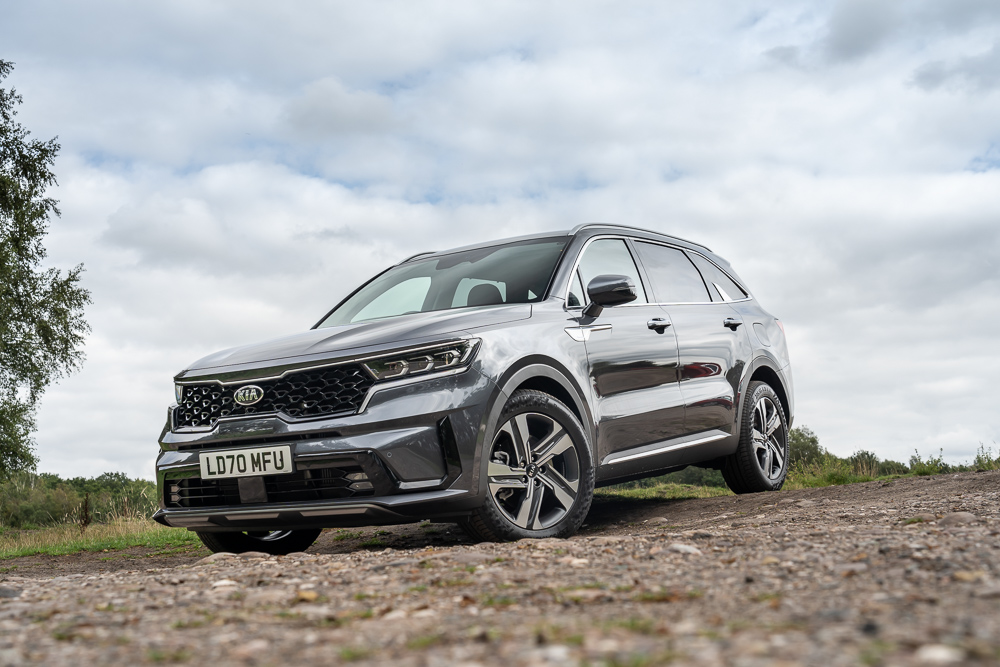
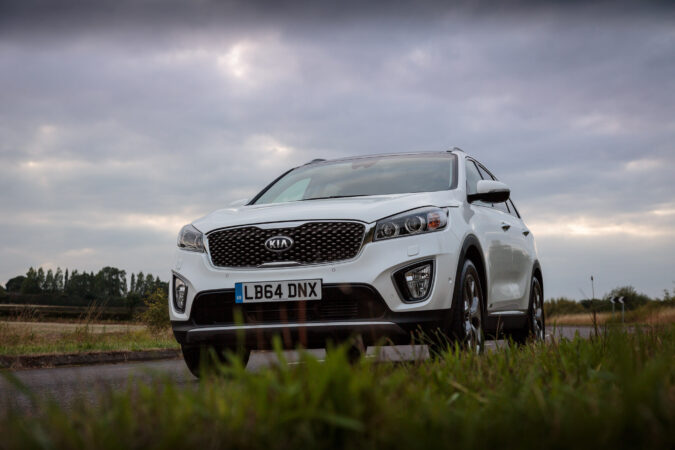
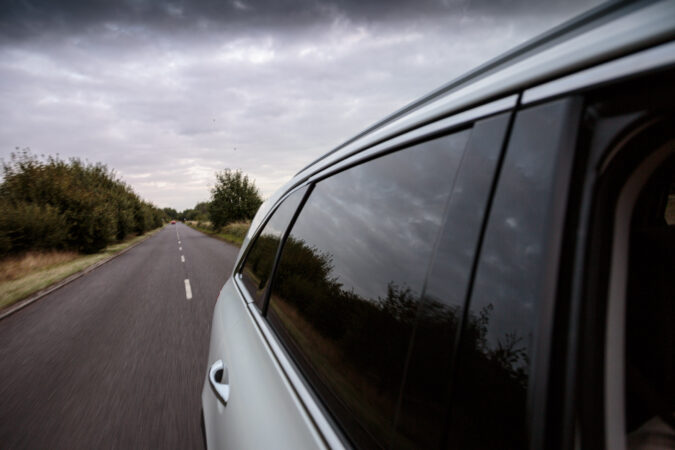
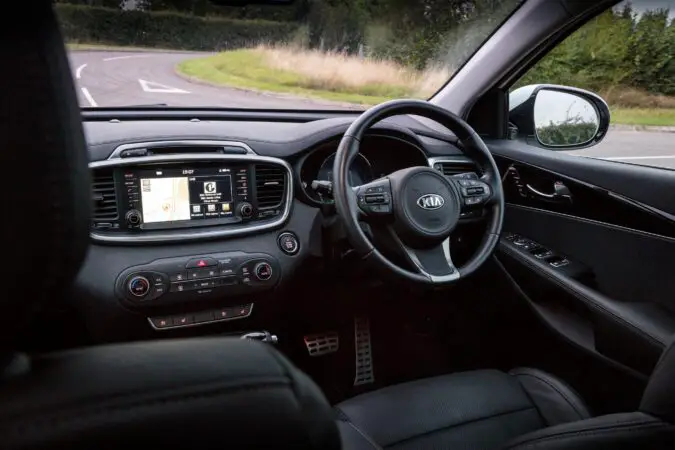
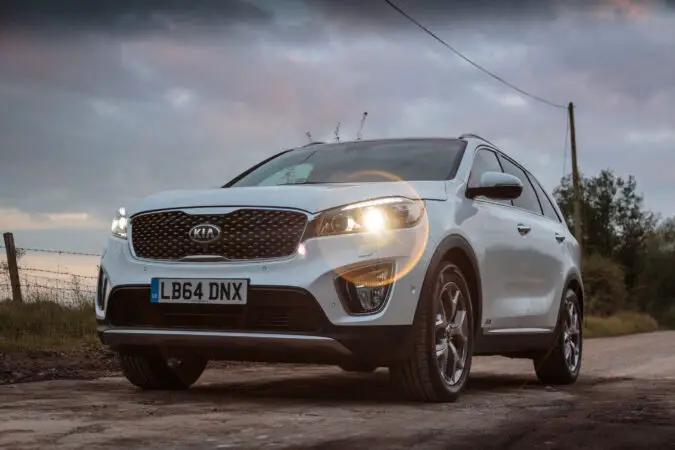
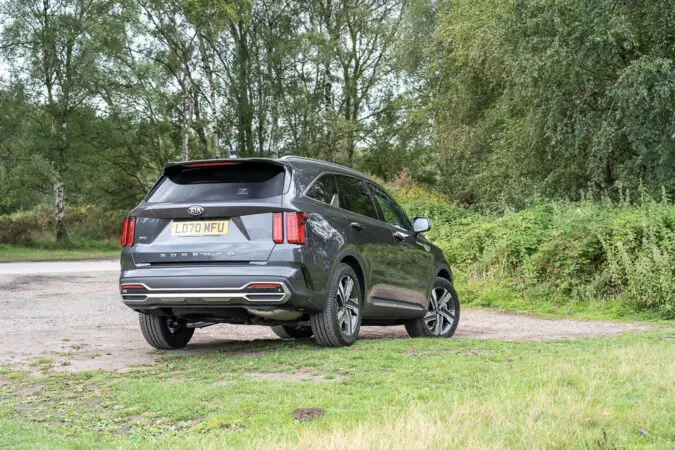
1 comment
I would avoid the Kia Sorento for 3 years. The first year, I would look out for problems with the transmission, the second year, I would look out for problems with the engine, and the third year, I